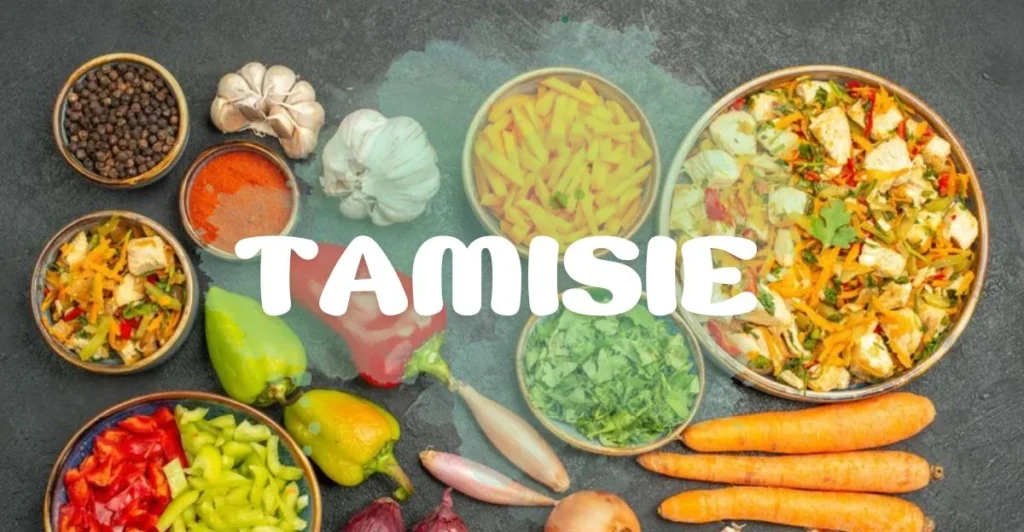Tamisie is a versatile and nutritious dish that combines grains, vegetables, and various protein sources, offering a delightful blend of flavors and textures. Its adaptability makes it a popular choice in many cuisines around the world.
Origins and Historical Significance
The exact origins of Tamisie are not well-documented, but it is believed to have ancient roots, evolving through various cultures and cuisines. Over time, Tamisie has become a symbol of unity and community, often prepared for gatherings and celebrations.
Nutritional Benefits of Tamisie
Tamisie is not only delicious but also packed with essential nutrients. Some of its health benefits include:
- Rich in Fiber: The combination of whole grains and vegetables provides a good amount of dietary fiber, promoting healthy digestion.
- High in Protein: Incorporating various protein sources like beans, lentils, or meats contributes to muscle repair and overall body function.
- Loaded with Vitamins and Minerals: The diverse ingredients in Tamisie offer a range of vitamins and minerals essential for maintaining good health.
Key Components of Tamisie
Tamisie is known for its flexibility, allowing for a wide range of ingredients. The primary components include:
Grains: The Foundation of Tamisie
Grains form the base of Tamisie, providing energy and substance. Common choices are:
- Rice: A staple in many cuisines, offering a neutral flavor that complements various ingredients.
- Quinoa: A protein-rich grain that adds a slightly nutty taste.
- Barley: Provides a chewy texture and absorbs flavors well.
Vegetables: Adding Color and Nutrition
Vegetables enhance the dish’s flavor profile and nutritional value. A variety of vegetables can be used, such as:
- Leafy Greens: Spinach, kale, or Swiss chard add vitamins and a mild taste.
- Root Vegetables: Carrots, sweet potatoes, or beets contribute sweetness and earthiness.
- Cruciferous Vegetables: Broccoli or cauliflower offer crunch and are rich in nutrients.
Protein Sources: Balancing the Meal
Incorporating proteins makes Tamisie a complete meal. Options include:
- Legumes: Beans, lentils, or chickpeas are excellent plant-based proteins.
- Meats: Chicken, beef, or lamb add richness and depth.
- Seafood: Fish or shrimp introduce a different flavor dimension.
Preparation Methods
The method of cooking Tamisie can vary, but common techniques include:
- Boiling: Cooking grains and vegetables in water or broth until tender.
- Stir-Frying: Quickly cooking ingredients over high heat with minimal oil.
- Steaming: Gently cooking ingredients with steam to preserve nutrients and flavor.
Regional Variations of Tamisie
Tamisie has inspired numerous regional variations, each adding unique touches:
- Middle Eastern Tamisie: Incorporates spices like cumin and coriander, with additions like dried fruits and nuts.
- Mediterranean Tamisie: Features ingredients like olives, feta cheese, and a drizzle of olive oil.
- Asian Tamisie: Utilizes soy sauce, sesame oil, and includes vegetables like bok choy and mushrooms.
Health Benefits of Tamisie

Regular consumption of Tamisie offers several health advantages:
- Supports Digestive Health: The high fiber content aids in maintaining regular bowel movements and a healthy gut microbiome.
- Aids in Weight Management: The combination of fiber and protein promotes satiety, helping to control appetite.
- Provides Sustained Energy: Complex carbohydrates from grains offer a steady energy release, preventing spikes and crashes.
Conclusion
Tamisie is more than just a meal; it’s a celebration of flavors, cultures, and traditions. Its adaptability allows for endless variations, making it a dish that can cater to diverse tastes and dietary needs. Whether enjoyed as a hearty bowl on a cold day or a refreshing salad in warmer months, Tamisie remains a testament to the richness of global cuisines and the joy of shared meals.

